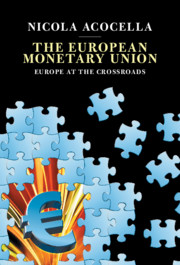Book contents
- The European Monetary Union
- The European Monetary Union
- Copyright page
- Dedication
- Contents
- Figures
- Tables
- Preface
- Acknowledgments
- Abbreviations
- Part I The Historical and Institutional Background
- 1 The Preparation of the European Economic and Monetary Union
- 2 The Institutions of the European Economic and Monetary Union
- 3 Theoretical Foundations and Practical Interests behind European Institutions
- Part II Institutions and Policies in Action
- Part III Lines of Reform of EMU Institutions
- References
- Index
1 - The Preparation of the European Economic and Monetary Union
from Part I - The Historical and Institutional Background
Published online by Cambridge University Press: 19 August 2020
- The European Monetary Union
- The European Monetary Union
- Copyright page
- Dedication
- Contents
- Figures
- Tables
- Preface
- Acknowledgments
- Abbreviations
- Part I The Historical and Institutional Background
- 1 The Preparation of the European Economic and Monetary Union
- 2 The Institutions of the European Economic and Monetary Union
- 3 Theoretical Foundations and Practical Interests behind European Institutions
- Part II Institutions and Policies in Action
- Part III Lines of Reform of EMU Institutions
- References
- Index
Summary
Chapter 1 describes the path that brought to the current European Economic and Monetary Union (EMU). In contrast to a common tradition and culture, based on largely similar philosophical and religious foundations, Europe has a history of fierce opposition and wars among national states that culminated in World War II. An important impulse to some kind of European cooperation came exactly from the attempt to counter this tradition of conflicts, even if the past was still weighing. This largely explains the long process through which European institutions have reached their current state as well as their “incompleteness.” The cooperation evolved from the European Coal and Steel Community (1951), having a limited coverage, but active inter-country coordination and cooperation and limits to free market, to the European Economic Community (1957), with a larger coverage, but a free-market orientation in all fields. This partially changed with the Maastricht Treaty (originating the European Union(EU) and the EMU), with the introduction of common monetary policy and some constraints on national fiscal policies (1992). The former now gathers 28 countries. The latter had only 11 members when it started in 1999 and has now enlarged to 19.
Keywords
- Type
- Chapter
- Information
- The European Monetary UnionEurope at the Crossroads, pp. 3 - 26Publisher: Cambridge University PressPrint publication year: 2020

